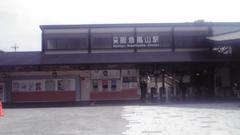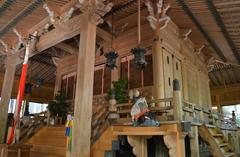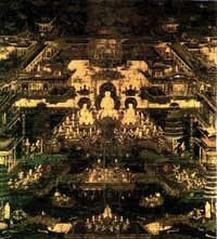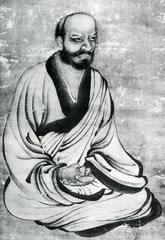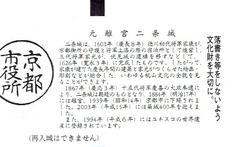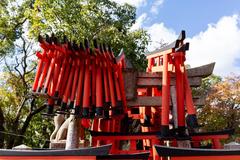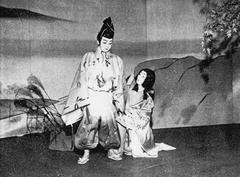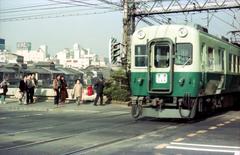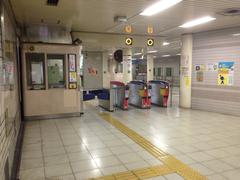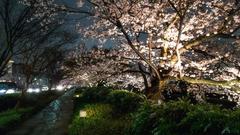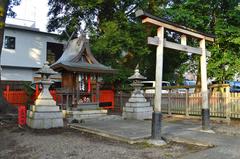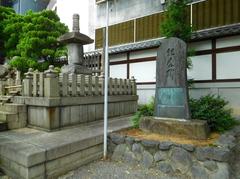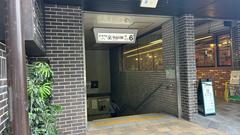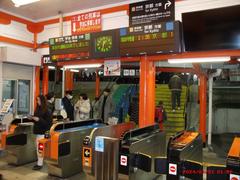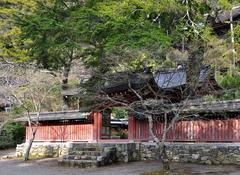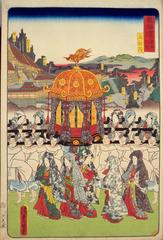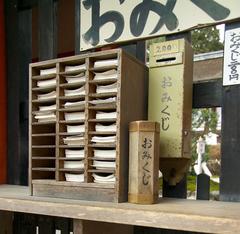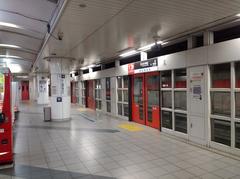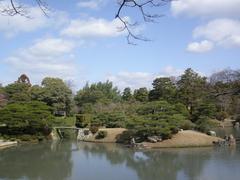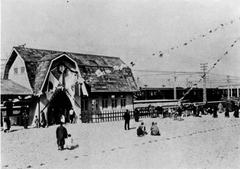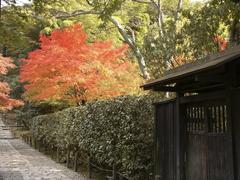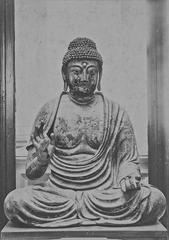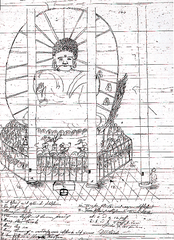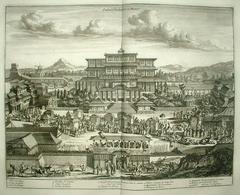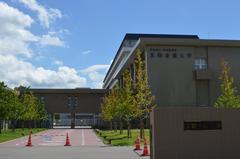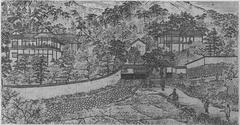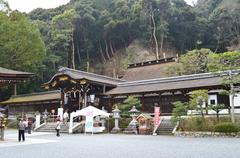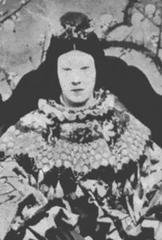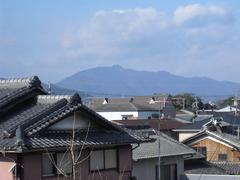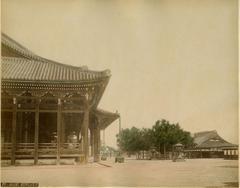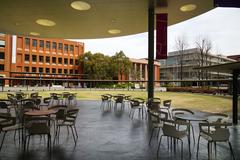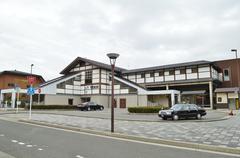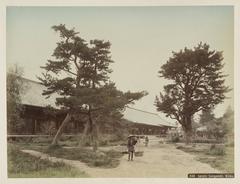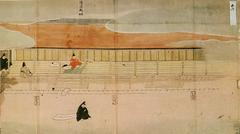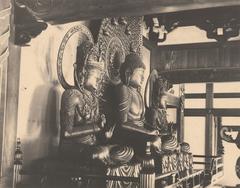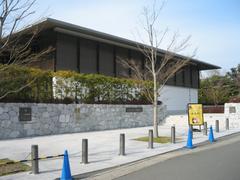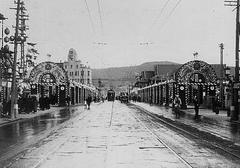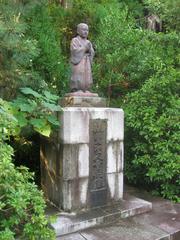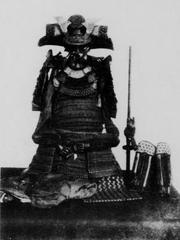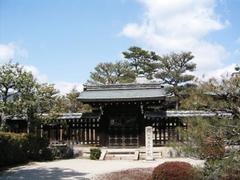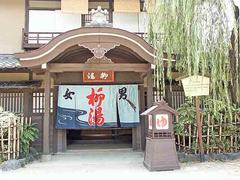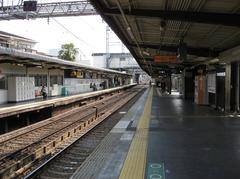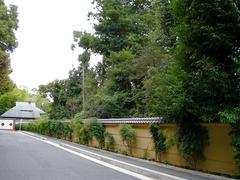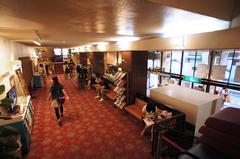Kyoto Theater: Visiting Hours, Tickets, and Essential Tips for Travelers in Kyoto, Japan
Date: 14/06/2025
Introduction: Why Kyoto Theater is a Must-Visit
Kyoto, Japan’s ancient capital, is revered as the birthplace and cultural heart of Japan’s traditional performing arts. From the sacred stylings of Noh to the vibrant spectacle of Kabuki, Kyoto’s theaters are living monuments where centuries-old customs flourish alongside contemporary innovation. This guide presents everything you need to explore Kyoto’s theatrical wonders—including visiting hours, ticketing details, accessibility, and practical travel tips. Whether you’re a first-time visitor or a seasoned culture enthusiast, Kyoto’s theaters offer an immersive journey into Japan’s unique heritage (Japan Welcomes You, Nippon.com).
Overview of Contents
- The Historical Roots of Kyoto Theater
- Architectural Evolution: Edo to Modern Times
- Cultural Significance and Living Traditions
- Notable Events and Theatrical Milestones
- Theaters as Cultural Hubs and Museums
- Educational Outreach and Community Engagement
- Visitor Information: Planning Your Kyoto Theater Experience
- Minamiza Theater
- ROHM Theatre Kyoto
- Pontocho Kaburenjo & Kamogawa Odori
- Nearby Attractions & Travel Tips
- Frequently Asked Questions (FAQ)
- Visual Highlights
- Internal Links
- Conclusion & Call to Action
The Historical Roots of Kyoto Theater
Kyoto’s performing arts legacy began during its time as imperial capital (794–1868), nurturing genres like Noh and Kyogen in the 14th century. Noh, a stylized musical drama rooted in samurai and aristocratic patronage, often took place at temples and shrines, emphasizing ritual and spirituality (Japan Welcomes You). Kabuki appeared in the early 17th century, founded by the trailblazing performer Okuni, and quickly became the entertainment of choice for commoners, further cementing Kyoto’s role in the theatrical arts (All About Japan).
Architectural Evolution: From Edo Period to Modern Kyoto
The Edo Period and the Rise of Minamiza
The Edo period (1603–1868) saw the establishment of iconic venues like Minamiza, founded in 1610 and now the oldest remaining Kabuki theater in Japan (Nippon.com). Its architecture features the grand Momoyama style—elaborate gables and a symbolic yagura (watchtower)—reflecting the theater’s prestige. Despite fires and urban change, Minamiza’s design has been faithfully restored and modernized, preserving its historical ambiance.
Modernization and Contemporary Theater Design
Following the Meiji Restoration, theaters began incorporating Western technologies and architectural elements, such as gas lighting and more sophisticated stage machinery (Kyoto City Kyocera Museum). The 20th and 21st centuries brought further innovation—ROHM Theatre Kyoto (formerly Kyoto Kaikan), reopened in 2016, blends minimalist modernism with traditional Japanese design, using wood latticework and expansive glass to harmonize with Kyoto’s landscape (Medium).
Cultural Significance and Living Traditions
Kyoto theaters are guardians of Japan’s intangible heritage. Noh, Kabuki, and Kyogen are recognized by UNESCO as Intangible Cultural Heritage, and their performances transmit historical narratives, spiritual symbolism, and social values (Japan Welcomes You). Annual events like the Miyako Odori and Kyo Odori, featuring Kyoto’s geiko and maiko, draw crowds from around the world to venues such as Minamiza and Gion Kobu Kaburenjo (Medium).
Notable Events and Theatrical Milestones
- Minamiza’s Annual Kaomise: A December tradition showcasing top Kabuki actors (Nippon.com).
- International Engagement: Productions like the play “Kyoto,” dramatizing the 1997 Kyoto Protocol and performed internationally, highlight the city’s ongoing influence (RSC, Soho Place).
- Preservation and Innovation: Restoration efforts at Minamiza and new venues like ROHM Theatre Kyoto demonstrate Kyoto’s commitment to heritage and creativity (Medium).
Theaters as Cultural Hubs and Living Museums
Theaters in Kyoto serve as both performance spaces and living museums, offering immersive experiences that connect visitors to Japan’s artistic and spiritual roots (Medium). Museums like the Kyoto National Museum display costumes, masks, and instruments, deepening public appreciation for these art forms.
Educational Outreach and Community Engagement
Local organizations and schools ensure the next generation learns Noh, Kabuki, and Kyomai dance through workshops, lectures, and hands-on activities (Medium). Community festivals and seasonal events further foster participation and preserve Kyoto’s living traditions.
Visitor Information: Planning Your Kyoto Theater Experience
Minamiza Theater
- Location: 1 Chome-1-2 Shijō Kawaramachi, Shimogyō Ward, Kyoto
- Box Office Hours: 9:00 AM–5:00 PM (extended during performance days)
- Performance Start Times (2025):
- June 12–22 (except June 17): 2:00 PM
- August 15–26 (except August 21): 11:30 AM, 1:30 PM, 4:00 PM
- September 2–26 (except Sept 9 & 16): 11:00 AM, 4:00 PM
- October 10–26: 12:00 PM, 4:00 PM (Kabukiweb)
- Tickets: ¥3,000–¥15,000 (online or box office, early booking advised)
- Accessibility: Wheelchair access and reserved seating; inquire for assistance and English headsets (limited supply).
- Getting There: 5-minute walk from Kawaramachi Station (Hankyu Line) or Gion-Shijo Station (Keihan Line)
- Nearby: Gion district, Yasaka Shrine, Kamo River (Inside Kyoto)
ROHM Theatre Kyoto
- Location: 13 Okazaki Minamimachi, Sakyo-ku, Kyoto
- Box Office Hours: 10:00 AM–6:00 PM (ROHM Theatre Kyoto Official Site)
- Tickets: Vary by event (¥2,000–¥8,000+), available online or at the box office
- Getting There: 10-minute walk from Keage Station (Tozai Line); also accessible by bus
- Accessibility: Barrier-free entrances, elevators, accessible seating, assistive listening devices
Pontocho Kaburenjo & Kamogawa Odori
- Performance Dates (2025): May 1–24 (except Sundays), shows at 1:30 PM and 4:20 PM (Japan Truly)
- Tickets: ¥3,000–¥5,500
- Getting There: 7-minute walk from Sanjo Station; in the scenic Pontocho district
Practical Travel Tips
- Book tickets online in advance, especially for Kabuki and festival performances.
- Arrive early to explore the theater and surrounding historic districts.
- Check for English-language guides or pamphlets.
- Dress comfortably; kimono rentals are available for an immersive experience.
- Respect theater etiquette: arrive on time, silence phones, and avoid photography during performances.
Frequently Asked Questions (FAQ)
Q: What are typical visiting hours for Kyoto theaters?
A: Ticket offices usually open 9:00/10:00 AM–5:00/6:00 PM; performance times vary. Check official websites for updates.
Q: How can I buy tickets?
A: Purchase online via official theater websites, at box offices, or through authorized resellers. Advance booking is recommended.
Q: Are Kyoto theaters accessible for people with disabilities?
A: Yes, most major theaters offer wheelchair access and assistive services. Contact ahead for specific needs.
Q: Is photography allowed?
A: Photography is allowed in public areas but strictly prohibited during performances.
Q: What else can I do nearby?
A: Visit the Gion district, Yasaka Shrine, Kyoto National Museum, and local tea houses.
Visual Highlights
- Minamiza’s striking Momoyama-style façade at sunset
- Noh performer in ritual mask and costume on stage
- Torch-lit Takigi Noh at Heian-jingu Shrine
Internal Links
Conclusion
Kyoto’s theaters—led by the historic Minamiza, the contemporary ROHM Theatre Kyoto, and the atmospheric Pontocho Kaburenjo—offer much more than entertainment. They are portals into Japan’s living heritage, places where artistry, architecture, and community converge. By visiting, you become part of an enduring tradition, supporting artisans and performers who keep Kyoto’s cultural soul alive. Plan your trip, secure your tickets, and immerse yourself in the timeless spectacle of Kyoto theater.
Download the Audiala app for exclusive guides, ticket bookings, and up-to-date performance schedules. Follow us on social media for the latest in Kyoto’s vibrant performing arts scene!
References and External Links
- Kyoto Welcomes You: Discover the Ancient Art of Noh Theatre
- All About Japan: Kabuki History
- Nippon.com: Guide to Minamiza Theater
- Kyoto City Kyocera Museum Exhibition
- Medium: The Evolution of Kyoto’s Architecture
- Medium: Traditional Performing Arts in Kyoto
- RSC: Kyoto Play and the Kyoto Protocol
- Soho Place: Kyoto Play Information
- Japan Travel: Experience Traditional Japanese Theater in Kyoto
- Kyoto Travel: Deeper Kyoto with Noh
- Inside Kyoto: Kyoto Events and Theater
- Minamiza Official Site
- ROHM Theatre Kyoto Official Site

